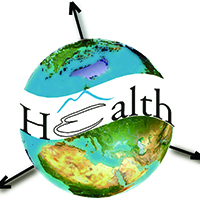Leptospirosis and its spatial and temporal relations with natural disasters in six municipalities of Santa Catarina, Brazil, from 2000 to 2016

All claims expressed in this article are solely those of the authors and do not necessarily represent those of their affiliated organizations, or those of the publisher, the editors and the reviewers. Any product that may be evaluated in this article or claim that may be made by its manufacturer is not guaranteed or endorsed by the publisher.
Authors
Leptospirosis is a serious bacterial infection that occurs worldwide, with fatality rate of up to 40% in the most severe cases. The number of cases peaks during the rainy season and may reach epidemic proportions in the event of flooding. It is possible that people living in areas affected by natural disasters are at greater risk of contracting the disease. The aim of this study was to identify clusters of relatively higher risk for leptospirosis occurrence, both in space and time, in six municipalities of Santa Catarina, Brazil, which had the highest incidence of the disease between 2000 and 2016, and to evaluate if these clusters coincide with the occurrence of natural disasters. The cases were geocoded with the geographic coordinates of patients' home addresses, and the analysis was performed using SaTScan software. The areas mapped as being at risk for hydrological and mass movements were compared with the locations of detected leptospirosis clusters. The disease was more common in men and in the age group from 15 to 69 years. In the scan statistics performed, only space-time showed significant results. Clusters were detected in all municipalities in 2008, when natural disasters preceded by heavy rainfall occurred. One of the municipalities also had clusters in 2011. In these clusters, most of the cases lived in urban areas and areas at risk for experiencing natural disasters. The interaction between time (time of disaster occurrence) and space (areas at risk of experiencing natural disasters) were the determining factors affecting cluster formation.
Supporting Agencies
Funding: This work was supported by the [National Council for Scientific and Technological DevelopmentHow to Cite

This work is licensed under a Creative Commons Attribution-NonCommercial 4.0 International License.
PAGEPress has chosen to apply the Creative Commons Attribution NonCommercial 4.0 International License (CC BY-NC 4.0) to all manuscripts to be published.










